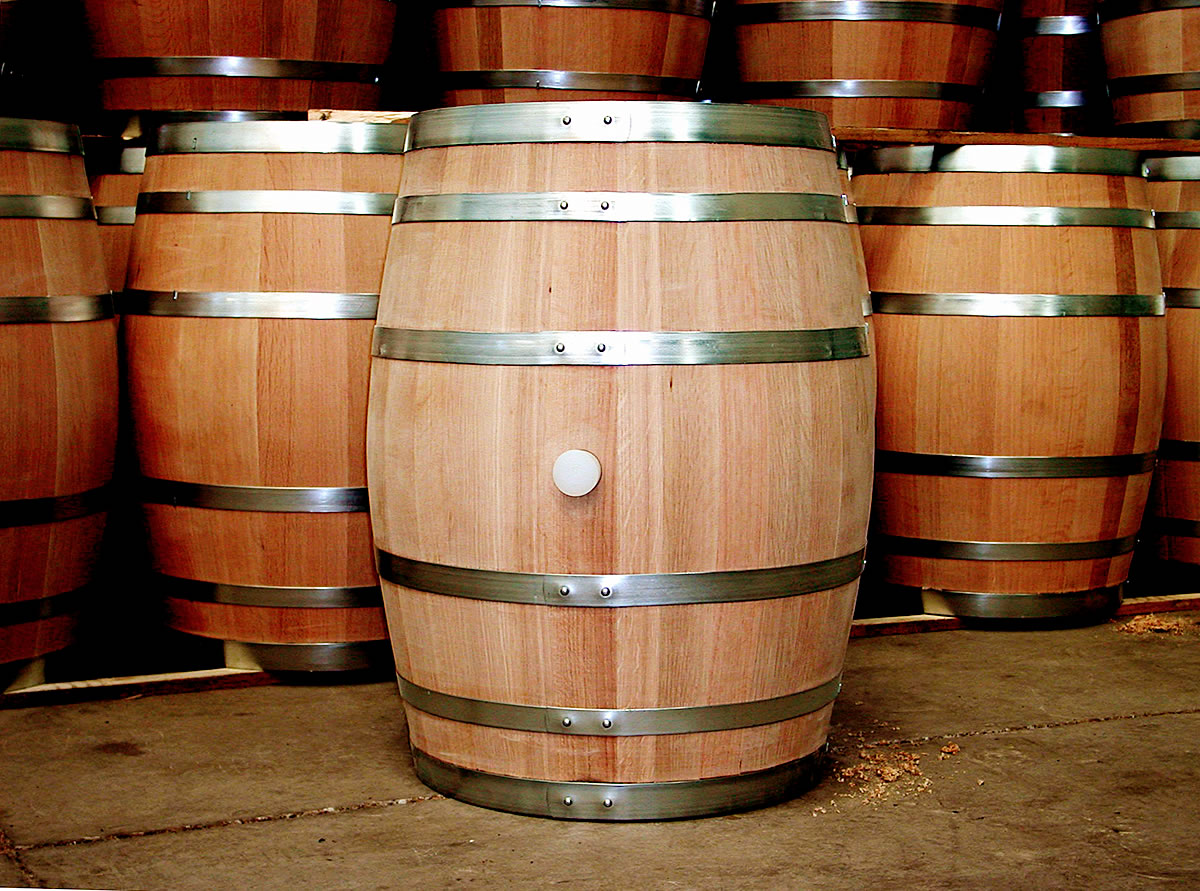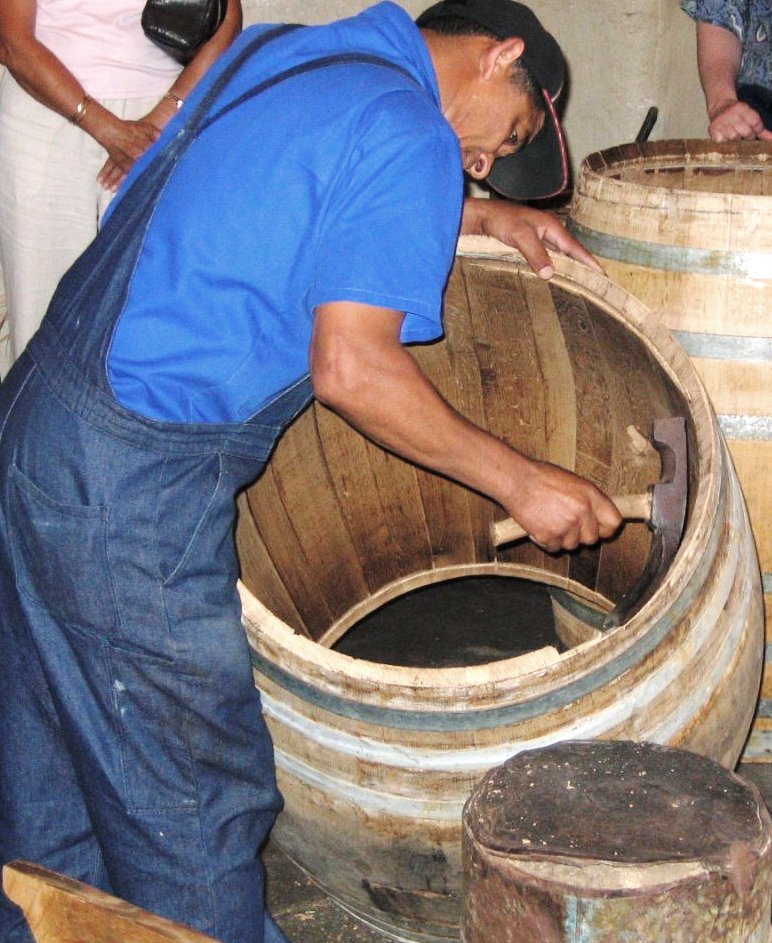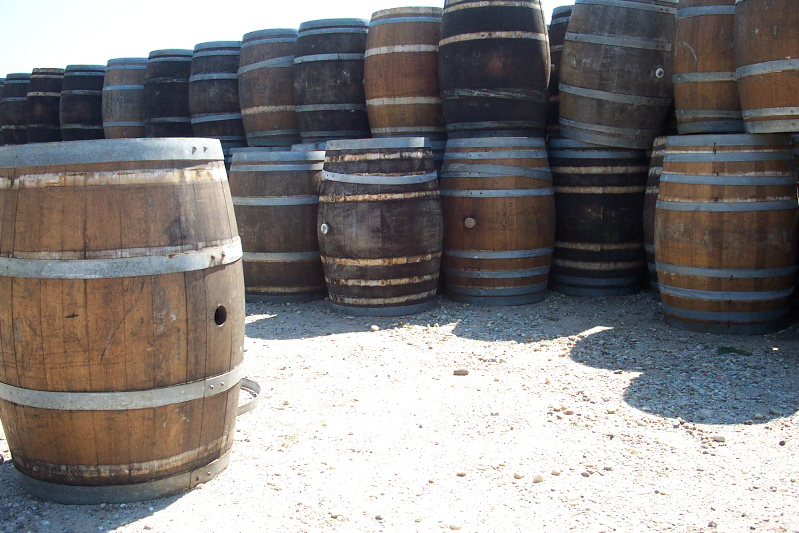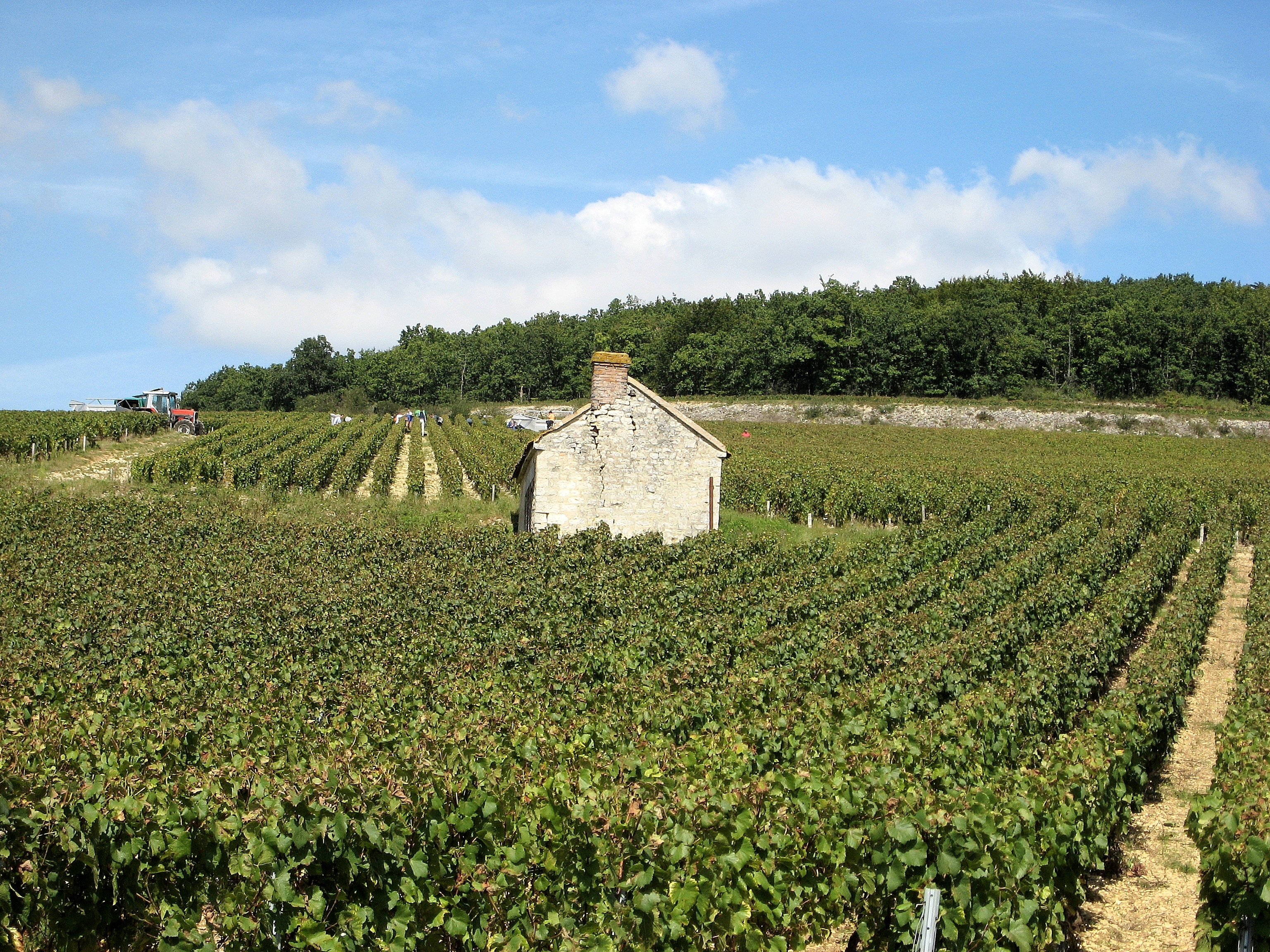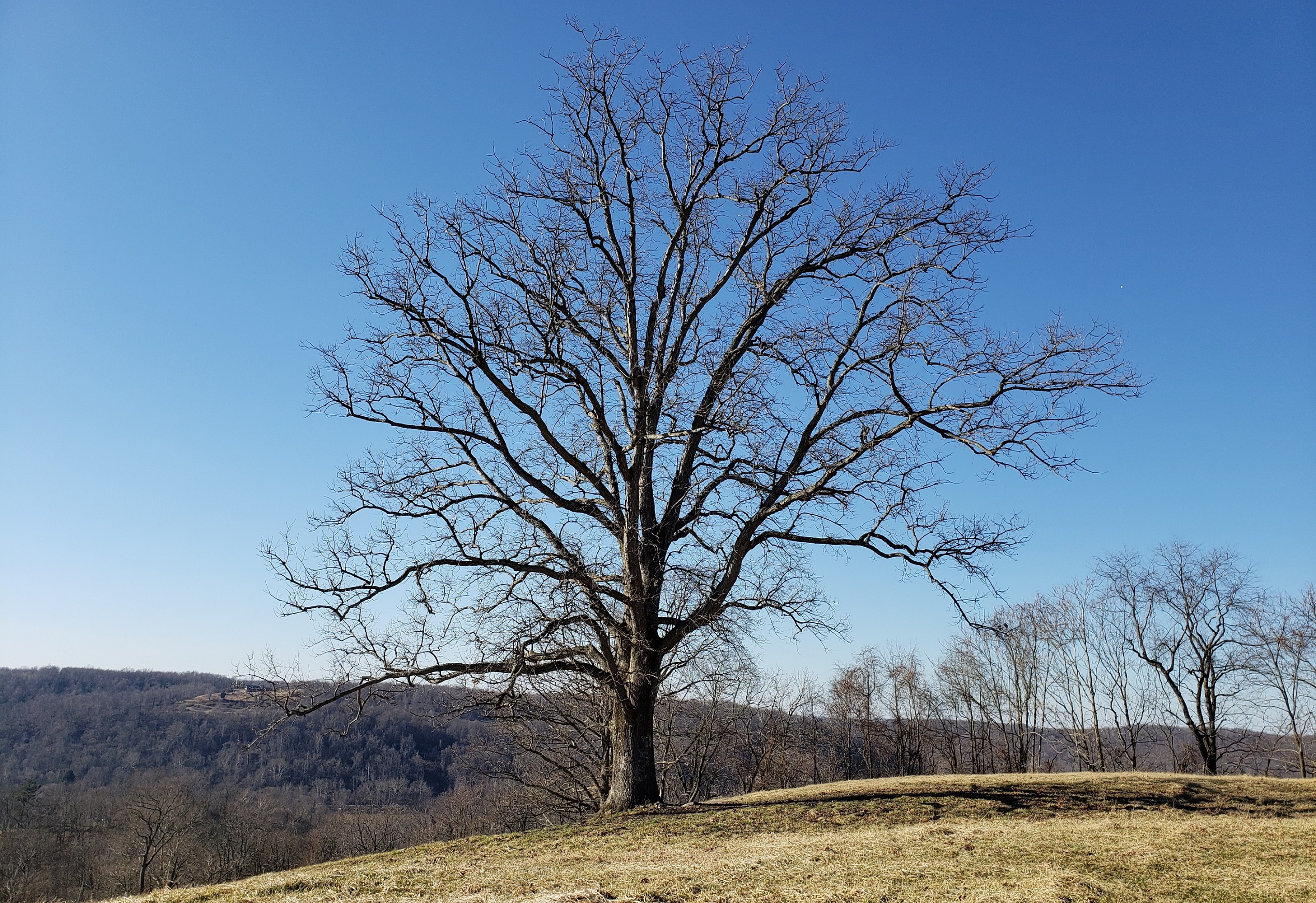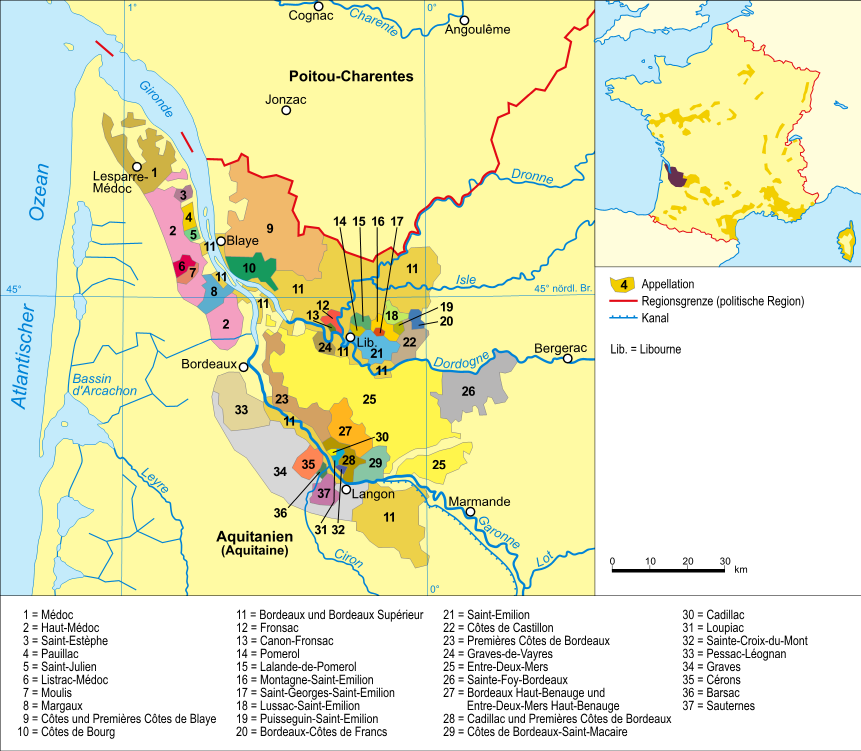|
Barrels
A barrel or cask is a hollow cylindrical container with a bulging center, longer than it is wide. They are traditionally made of wooden staves and bound by wooden or metal hoops. The word vat is often used for large containers for liquids, usually alcoholic beverages; a small barrel or cask is known as a keg. Barrels have a variety of uses, including storage of liquids such as water, oil, and alcohol. They are also employed to hold maturing beverages such as wine, cognac, armagnac, sherry, port, whiskey, beer, arrack, and sake. Other commodities once stored in wooden casks include gunpowder, meat, fish, paint, honey, nails, and tallow. Modern wooden barrels for wine-making are made of English oak (''Quercus robur''), white oak (''Quercus petraea''), American white oak (''Quercus alba''), more exotic is mizunara oak (''Quercus crispula''), and recently Oregon oak (''Quercus garryana'') has been used. Someone who makes traditional wooden barrels is called a cooper. ... [...More Info...] [...Related Items...] OR: [Wikipedia] [Google] [Baidu] |
Oak (wine)
Oak is used in winemaking to vary the color, flavor, tannins (wine), tannin profile and texture of wine. It can be introduced in the form of a barrel during the fermentation (wine), fermentation or aging barrel, aging periods, or as free-floating chips or stave (wood), staves added to wine fermented in a vessel like stainless steel. Oak barrels can impart other qualities to wine through evaporation and low level exposure to oxygen.J. Robinson ''Jancis Robinson's Wine Course'' Third Edition pg 91-93 Abbeville Press 2003 History In early History of wine, wine history, the amphora was the vessel of choice for the storage (wine), storage and transportation of wine. Due to the perishable nature of wood material it is difficult to trace the usage of barrels in history. The Greek historian Herodotus noted that ancient Mesopotamians used barrels made of palm wood to transport wine along the Euphrates. Palm is a difficult material to bend and fashion into barrels, however, and wine merch ... [...More Info...] [...Related Items...] OR: [Wikipedia] [Google] [Baidu] |
Cooper (profession)
A cooper is a craftsman who produces wooden casks, barrels, vats, buckets, tubs, troughs, and other similar containers from timber staves that were usually heated or steamed to make them pliable. Journeymen coopers also traditionally made wooden implements, such as rakes and wooden-bladed shovels. In addition to wood, other materials, such as iron, were used in the manufacturing process. The trade is the origin of the surname Cooper. Etymology The word "cooper" is derived from Middle Dutch or Middle Low German ''kūper'' 'cooper' from ''kūpe'' 'cask', in turn from Latin ''cupa'' 'tun, barrel'. The word was adopted in England as an occupational surname, Cooper. The art and skill of ''coopering'' refers to the manufacture of wooden casks, or barrels. The facility in which casks are made is referred to as a cooperage. History Traditionally, a cooper is someone who makes wooden, staved vessels, held together with wooden or metal hoops and possessing flat ends or he ... [...More Info...] [...Related Items...] OR: [Wikipedia] [Google] [Baidu] |
Stave (wood)
] A stave is a narrow length of wood with a slightly bevelled edge to form the sides of barrels, tanks, tubs, vats and pipelines, originally handmade by coopers. They have been used in the construction of large holding tanks and penstocks at hydro power developments. They are also used in the construction of certain musical instruments with rounded bodies or backs. See also * Rubicon Hydroelectric Scheme, which has wood stave penstocks on operating power stations *Lake Margaret Power Station The Lake Margaret Power Stations comprise two hydroelectric power stations located in Western Tasmania, Australia. The power stations are part of the King Yolande Power Scheme and are owned and operated by Hydro Tasmania. Officially the Upper ..., which had a wood stave penstock replaced in 2010 References Structural engineering Woodworking {{civil-engineering-stub ... [...More Info...] [...Related Items...] OR: [Wikipedia] [Google] [Baidu] |
Burgundy Wine
Burgundy wine ( or ') is made in the Burgundy region of eastern France, in the valleys and slopes west of the Saône, a tributary of the Rhône. The most famous wines produced here, and those commonly referred to as "Burgundies", are dry (wine), dry red wines made from pinot noir grapes and white wines made from chardonnay grapes. Red and white wines are also made from other grape varieties, such as gamay and aligoté, respectively. Small amounts of rosé and sparkling wines are also produced in the region. Chardonnay-dominated Chablis (wine), Chablis and gamay-dominated Beaujolais wine, Beaujolais are recognised as part of the Burgundy wine region, but wines from those subregions are usually referred to by their own names rather than as "Burgundy wines". Burgundy has a higher number of ' (AOCs) than any other French region, and is often seen as the most '-conscious of the French wine regions. The various Burgundy AOCs are classification of wine, classified from carefully deline ... [...More Info...] [...Related Items...] OR: [Wikipedia] [Google] [Baidu] |
Quercus Alba
''Quercus alba'', the white oak, is one of the preeminent hardwoods of eastern and central North America. It is a long-lived oak, native to eastern and central North America and found from Minnesota, Ontario, Quebec, and southern Maine south as far as northern Florida and eastern Texas. Specimens have been documented to be over 450 years old. Although called a white oak, it is very unusual to find an individual specimen with white bark; the usual colour is a light gray. The name comes from the colour of the finished wood. In the forest it can reach a magnificent height and in the open it develops into a massive broad-topped tree with large branches striking out at wide angles. Description ''Quercus alba'' typically reaches heights of at maturity, and its canopy can become quite massive as its lower branches are apt to extend far out laterally, parallel to the ground. Trees growing in a forest will become much taller than ones in an open area which develop to be short and mass ... [...More Info...] [...Related Items...] OR: [Wikipedia] [Google] [Baidu] |
Whiskey
Whisky or whiskey is a type of liquor made from Fermentation in food processing, fermented grain mashing, mash. Various grains (which may be Malting, malted) are used for different varieties, including barley, Maize, corn, rye, and wheat. Whisky is typically Aging (food), aged in wooden casks, commonly of charred white oak. Uncharred white oak casks previously used for the aging of Port wine, port, rum or sherry may be employed during storage to impart a unique flavor and color. Whisky is a strictly regulated Alcoholic spirit, spirit worldwide with many classes and types. The typical unifying characteristics of the different classes and types are the fermentation of grains, distillation, and aging in Barrel, wooden barrels. Etymology The word ''whisky'' (or ''whiskey'') is an anglicisation of the Classical Gaelic word (or ) meaning "water" (now written as in Modern Irish, and in Scottish Gaelic). This Gaelic word shares its ultimate Indo-European_vocabulary#Natural_features, ... [...More Info...] [...Related Items...] OR: [Wikipedia] [Google] [Baidu] |
Tallow
Tallow is a rendered form of beef or mutton suet, primarily made up of triglycerides. In industry, tallow is not strictly defined as beef or mutton suet. In this context, tallow is animal fat that conforms to certain technical criteria, including its melting point. Commercial tallow commonly contains fat derived from other animals, such as lard from pigs, or even from plant sources. The solid material remaining after rendering is called cracklings, greaves, or graves. It has been used mostly for animal food, such as dog food. In the soap industry and among soap-making hobbyists, the name tallowate is used informally to refer to soaps made from tallow. Sodium tallowate, for example, is obtained by reacting tallow with sodium hydroxide (lye, caustic soda) or sodium carbonate (washing soda). It consists chiefly of a variable mixture of sodium salts of fatty acids, such as oleic and palmitic.Ruth Winter (2007): ''A Consumerýs Dictionary of Household, Yard and Office ... [...More Info...] [...Related Items...] OR: [Wikipedia] [Google] [Baidu] |
Stainless Steel
Stainless steel, also known as inox, corrosion-resistant steel (CRES), or rustless steel, is an iron-based alloy that contains chromium, making it resistant to rust and corrosion. Stainless steel's resistance to corrosion comes from its chromium content of 11% or more, which forms a Passivation (chemistry), passive film that protects the material and can self-healing material, self-heal when exposed to oxygen. It can be further alloyed with elements like molybdenum, carbon, nickel and nitrogen to enhance specific properties for various applications. The alloy's properties, such as luster and resistance to corrosion, are useful in many applications. Stainless steel can be rolled into Sheet metal, sheets, plates, bars, wire, and tubing. These can be used in cookware, cutlery, surgical instruments, major appliances, vehicles, construction material in large buildings, industrial equipment (e.g., in paper mills, chemical plants, water treatment), and storage tanks and tankers for ch ... [...More Info...] [...Related Items...] OR: [Wikipedia] [Google] [Baidu] |
Aluminum
Aluminium (or aluminum in North American English) is a chemical element; it has chemical symbol, symbol Al and atomic number 13. It has a density lower than that of other common metals, about one-third that of steel. Aluminium has a great affinity towards oxygen, passivation (chemistry), forming a protective layer of aluminium oxide, oxide on the surface when exposed to air. It visually resembles silver, both in its color and in its great ability to reflect light. It is soft, magnetism, nonmagnetic, and ductility, ductile. It has one stable isotope, 27Al, which is highly abundant, making aluminium the abundance of the chemical elements, 12th-most abundant element in the universe. The radioactive decay, radioactivity of aluminium-26, 26Al leads to it being used in radiometric dating. Chemically, aluminium is a post-transition metal in the boron group; as is common for the group, aluminium forms compounds primarily in the +3 oxidation state. The aluminium cation Al3+ ... [...More Info...] [...Related Items...] OR: [Wikipedia] [Google] [Baidu] |
Cognac
Cognac ( , also , ) is a variety of brandy named after the Communes of France, commune of Cognac, France. It is produced in the surrounding wine-growing region in the Departments of France, departments of Charente and Charente-Maritime. Cognac production falls under French appellation d'origine contrôlée (AOC) designation, with production methods and naming required to meet certain legal requirements. Among the specified grapes, Ugni blanc, known locally as Saint-Émilion, is most widely used. The brandy must be twice Distillation, distilled in copper pot stills and aged at least two years in French Aging barrel, oak barrels from Limousin or Forest of Tronçais, Tronçais. Cognac matures in the same way as whiskies and wines barrel-age, and most cognacs spend considerably longer "on the wood" than the minimum legal requirement. Production process Cognac is a type of brandy, and after the distillation and during the aging process, is also called ''eau de vie''. It is produce ... [...More Info...] [...Related Items...] OR: [Wikipedia] [Google] [Baidu] |
Bordeaux Wine
Bordeaux wine (; ) is produced in the Bordeaux region of southwest France, around the city of Bordeaux, on the Garonne River. To the north of the city, the Dordogne River joins the Garonne forming the broad estuary called the Gironde; the Gironde department, with a total vineyard area of 110,800 hectares, is the second largest wine-growing area in France behind the Languedoc-Rousillon. Average vintages produce over 700 million bottles of wine, ranging from large quantities of daily table wine to some of the world's most expensive and prestigious wines. The vast majority of wine produced in Bordeaux is red (sometimes called "claret" in Britain), with sweet white wines (most notably Sauternes), dry whites, and (in much smaller quantities) rosé and sparkling wines ( Crémant de Bordeaux) collectively making up the remainder. Bordeaux wine is made by more than 5,660 producers or ''châteaux''. There are 65 appellations of Bordeaux wine. History Viticulture was introduce ... [...More Info...] [...Related Items...] OR: [Wikipedia] [Google] [Baidu] |
